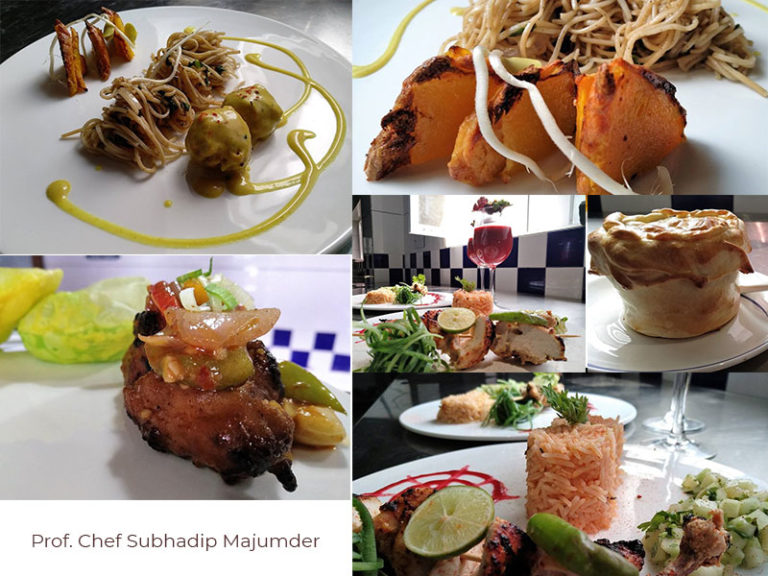Fusion cuisine is the deliberate combination of elements from two or more spatially or temporally distinct cuisines. Transcending conventional geographical and historical boundaries, it is a unique form of cuisine particular to today’s postmodern world. The precise origin of the term “fusion cuisine” is uncertain although “culinary globalization,” “new world cuisine,” “new American cuisine,” and “new Australian cuisine,” all other names for fusion cuisine, have their roots in the 1970s in the emergence in France of nouvelle cuisine, which combined elements of French and, primarily, Japanese cooking (Sokolov, 1992). As nouvelle cuisine spread to other nations, it combined with elements of the foods of the host country. The concept of “fusion cuisine” was first used in the 70s in the USA, when chefs mixed flavours from East and West, especially on the border of Texas and Mexico, the so-called Tex-Mex, in search of a way to surprise diners. Since then this kind of food has gone professional, and has been studied and researched by the most prestigious chefs, and currently it enjoys the highest reputation.
As Adam Gopnik has observed, while the Enlightenment of new cooking took place in France, the Revolution occurred elsewhere. Indeed, fusion cuisine has emanated primarily from the United States and Australia, but has spread to other parts of the world as well. Fusion cuisine may have taken off in the United States and Australia, because of those countries’ short history relative to the rest of the world, their unique immigration histories, their lack of a cuisine that is clearly recognized by other parts of the world, and, most importantly, their lack of a culinary tradition.
As fusion cuisine evolves, many more ethnic and regional cuisines beyond French are being combined to form new hybrids. Exemplars of fusion cuisine include Pacific Rim cooking predominant in Australia and New Zealand, and Norman Van Aken’s New World Cuisine (combining Latin, Caribbean, Asian, and American elements) found in the United States. An example of a specific fusion dish that combines classic Chinese recipes with French techniques and Mexican ingredients is Susanna Foo’s pan-seared sweetbreads with veal dumplings made with ancho chili and served with Sichuan pickled relish and crispy shallots.
The social and cultural conditions that have contributed to the development of fusion cuisine, as well as most forms of contemporary cuisines, include increasing processes of globalization, increasing cultural flows through media and travel, the rise of a consumer culture, the modern food system, the expansion of the cookbook industry, the increased prominence of chefs throughout the world, the growth of the food and restaurant industry, and a greater concern with healthy lifestyles.
Enjoying fusion cuisine is a real experience. At first, when you go to one of these restaurants, you will see that they usually have unusual and well-designed decoration: each one is turned into a little world, and the owners want each room to be unique and special.
After that, you will discover new flavours, aromas and textures, new ways of cooking, and sometimes you will enjoy dishes that have been prepared as true works of art. Also, the portions are no longer so minimalist and anyway, there are plenty of restaurants with set tasting menus that consist of between seven and fourteen dishes: so, however small the amount of food that is served may be, you will hardly leave feeling hungry.
Among the main types of fusion cuisine are Cajun, Tex-Mex, Balti and Chifa. There are also the brilliant Nikkei, Asian-Mediterranean and Turkish-German fusions. An odd fact is that the “doner kebab” as we know it did not originate in Istanbul but in Berlin.Now, mash-up dishes are important, where the chefs mix what seem to be impossible ingredients with results that can be flavoursome and agreeable, but sometimes generate culinary monsters. You can find things like the burguerito, which is a fusion of hamburger and burrito; the cragel, which is half croissant and half bagel; or the cronut, from the New York-bases French pastry cook Dominique Ansel, which is a mixture of croissant with donut.
It is clear that fusion cuisine is a universal phenomenon. So much so that all the world’s biggest cities have large restaurants that offer it.
A little more addition towards the collection of my Fusion Cuisine. Today we have prepared Beetroot and Satsuma Orange Soup, Peanut Butter Chicken Tandoori Steak with Cucumber Spaghetti, Pineapple and Cucumber Salsa and Pilaf A La Tomate with dusting of paprika and dollops of Gooseberry & Beetroot Coulis.
BON APETIT

